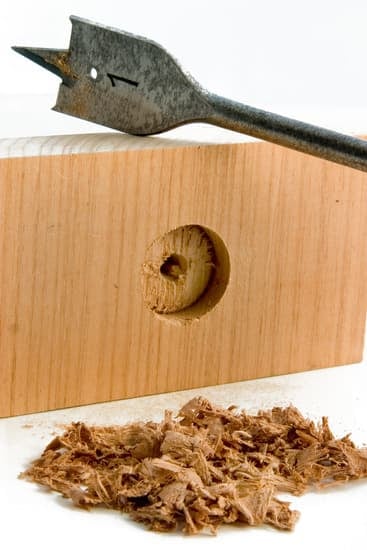What happened to Masters Home Improvement? This article delves into the rise and fall of the home improvement giant, examining the factors that led to its eventual closure. From its origins and growth to the financial troubles and management missteps, we will explore what ultimately led to the demise of Masters Home Improvement.
Masters Home Improvement was once a dominant force in the home improvement industry, with a rapid expansion across Australia. However, despite its early success, the company faced numerous challenges that ultimately resulted in its downfall. This article seeks to unravel the complex story behind the rise and fall of Masters Home Improvement, offering insights into the lessons learned and reflecting on its lasting legacy.
By dissecting the series of events that contributed to Masters Home Improvement’s closure, we hope to provide a comprehensive understanding of the company’s journey. From intense competition to internal struggles, there are many elements at play in this cautionary tale of business success and failure. Join us as we uncover the story behind What Happened to Masters Home Improvement.
The Rise of Masters Home Improvement
Masters Home Improvement began its journey in 2009, aiming to challenge the dominance of industry leaders like Bunnings Warehouse in the Australian home improvement market. Backed by the Woolworths Group, Masters Home Improvement quickly gained momentum, with plans to open hundreds of stores across Australia. The company invested heavily in marketing and branding, positioning itself as a fresh and innovative alternative to existing home improvement retailers.
During its rise, Masters Home Improvement sought to differentiate itself from competitors by offering a wide range of products, including exclusive lines and partnerships with well-known brands. The company also placed a strong emphasis on customer service and experience, investing in staff training and store design to create an inviting shopping environment.
As part of its expansion strategy, Masters Home Improvement successfully acquired strategic locations for its stores and embarked on an ambitious plan to capture market share. The company’s growth trajectory seemed promising, with many industry observers believing that it had the potential to transform the home improvement retail landscape in Australia. However, despite these early achievements and hopeful outlooks within the organization, a series of challenges ultimately led to the downfall of Masters Home Improvement.
- Expansion into oversaturated markets
- Mismanagement of inventory and supply chain issues
- Underestimation of competition from established retailers
These factors, coupled with other internal struggles, would contribute to an eventual decline that would reshape the narrative around this budding enterprise.
The Downfall
Lackluster Product Offering and Customer Experience
One significant factor that led to the downfall of Masters Home Improvement was its lackluster product offering and customer experience. While competing retailers such as Bunnings offered a wide range of high-quality products and excellent customer service, Masters struggled to meet these standards. Customers often found that the products at Masters were not as readily available or as well-stocked as those at their competitors, leading to a decline in customer satisfaction and repeat business.
Ineffective Marketing and Branding Strategies
Another contributing factor to the decline of Masters Home Improvement was its ineffective marketing and branding strategies. The company failed to establish a clear identity and value proposition in the market, which made it difficult to differentiate itself from other home improvement retailers. As a result, Masters struggled to attract and retain loyal customers, ultimately impacting its revenue and profitability.
Poor Expansion Decisions
Masters Home Improvement’s rapid expansion also played a role in its downfall. The company ambitiously opened a large number of stores in a short period, without adequately assessing market demand or ensuring operational efficiency. This led to overextension, with many of the newly opened stores failing to generate sufficient sales to cover their operational costs. The rapid expansion without proper market analysis contributed significantly to Masters’ financial struggles.
Ultimately, these factors combined to contribute to what happened to Masters Home Improvement, underscoring the importance of strategic planning, effective marketing, and maintaining quality products and customer experience in sustaining a successful retail business.
Competition
Masters Home Improvement faced fierce competition in the home improvement industry, particularly from established retailers such as Bunnings Warehouse and other hardware stores. The competition was intense, and Masters struggled to differentiate itself and carve out a distinct position in the market.
Challenges in Differentiation
One of the key challenges that Masters Home Improvement faced was finding a unique selling proposition that would set it apart from its competitors. While Bunnings Warehouse had already established itself as a trusted and reliable brand with a strong presence across Australia, Masters struggled to create a compelling reason for customers to choose their stores over others. This lack of differentiation made it difficult for the company to attract and retain loyal customers.
Market Saturation
Another factor that contributed to Masters’ struggle was the saturation of the home improvement market. With multiple players vying for market share, including international chains entering the Australian market, there was limited room for new entrants like Masters to make a substantial impact. This saturation also led to price wars and promotional battles, further eroding profits for all players in the industry.
Lack of Innovation
In addition to facing tough competition from existing players, Masters Home Improvement failed to bring significant innovations or unique offerings to the table. While some competitors embraced digital transformation and omnichannel retailing, Masters lagged behind in adopting modern technologies and improving customer experiences both online and in-store. This failure to innovate further hindered its ability to stay competitive in an evolving retail landscape.
Ultimately, these struggles against formidable competitors played a significant role in what happened to Masters Home Improvement. As the company failed to effectively position itself amidst stiff competition, its downfall became increasingly inevitable.
Financial Troubles
Masters Home Improvement, once a promising player in the home improvement industry, faced significant financial troubles that ultimately contributed to its downfall. The company’s inability to effectively manage its finances and adapt to changing market conditions played a key role in its demise. Below are some of the financial issues that plagued Masters Home Improvement:
- Heavy investment in store expansion: Masters Home Improvement went on an aggressive expansion spree, opening new stores across Australia at a rapid pace. This ambitious growth strategy required substantial financial resources without necessarily yielding the expected returns.
- High operational costs: The operation of large-scale hardware and home improvement stores comes with considerable overhead costs, including real estate expenses, inventory management, and employee wages. Masters Home Improvement struggled to contain these operational costs, putting strain on its financial resources.
- Poor sales performance: Despite significant investments and efforts to attract customers, Masters Home Improvement experienced lackluster sales performance. As a result, the company found itself in a position of financial instability, unable to generate enough revenue to sustain its operations.
These financial challenges compounded over time, leading to mounting debts and an unsustainable business model that ultimately forced Masters Home Improvement into insolvency.
The struggles with finances were further exacerbated by missed opportunities for cost-saving measures and strategic repositioning within the market. As a result of these financial issues, combined with other factors such as competition and management missteps, the once-promising home improvement giant succumbed to insurmountable challenges.
Management Missteps
The downfall of Masters Home Improvement can be attributed to a series of management missteps that ultimately led to the company’s closure. One of the critical errors made by leadership was the lack of adaptation to changing consumer preferences and industry trends. As competitors began to prioritize online sales and offer a wider range of products, Masters Home Improvement failed to keep up, leading to a loss of market share and relevance.
Additionally, poor strategic decisions, such as rapid expansion without sufficient market research, put a strain on the company’s financial resources. Masters Home Improvement opened numerous stores in a short period, often in locations that were not viable for sustained business operations. This overextension ultimately contributed to financial troubles that the company struggled to overcome.
Furthermore, there were also issues with operational inefficiencies and supply chain management. The company faced challenges in maintaining consistent stock levels and efficient distribution, which impacted customer satisfaction and loyalty. These operational missteps further eroded the company’s position in the industry.
| Management Missteps | Impact |
|---|---|
| Lack of adaptation to changing consumer preferences | Loss of market share and relevance |
| Rapid expansion without sufficient market research | Financial troubles |
| Operational inefficiencies and supply chain management challenges | Impact on customer satisfaction and loyalty |
Impact on Employees and Customers
After Masters Home Improvement stores closed, the impact on employees and customers was significant. With over 10,000 employees affected by the closure, many faced uncertainty about their future job prospects. The sudden loss of employment also meant a loss of income and stability for these individuals and their families.
For loyal customers of Masters Home Improvement, the closure meant the loss of a familiar and convenient home improvement option. Many customers had established relationships with staff members and relied on the store for their DIY needs.
In addition to the emotional impact, the closure had practical repercussions as well. For employees, finding new job opportunities in a competitive market proved to be a challenge. Many experienced difficulties in securing comparable positions within the industry. Customers who had come to rely on Masters Home Improvement for their home improvement needs now had to seek out alternative stores or suppliers, potentially disrupting their usual routines and purchasing habits.
The effects of the closure also extended to local communities where Masters Home Improvement stores were located. The absence of these stores meant not only fewer shopping options for residents but also the loss of potential economic activity in those areas. The closure of multiple locations across the country had a widespread impact on various stakeholders, from employees and customers to surrounding businesses and neighborhoods.
| Impact | Repercussions |
|---|---|
| Loss of Employment | Affected over 10,000 employees |
| Disruption for Customers | Loss of familiar home improvement option |
| Community Impact | Reduced economic activity in local areas |
Lessons Learned
Masters Home Improvement was once a major player in the home improvement industry, but its decline and eventual closure have left many wondering what happened to Masters Home Improvement. The downfall of the company offers valuable insights and takeaways for future business endeavors, shedding light on the factors that can contribute to the demise of a once-thriving enterprise.
One of the key lessons learned from the downfall of Masters Home Improvement is the significance of understanding and adapting to changing consumer preferences. The company struggled to keep up with industry competitors who were quick to embrace online shopping and digital experiences. As more consumers turned to e-commerce for their home improvement needs, Masters Home Improvement failed to pivot effectively, ultimately losing a significant portion of its customer base.
Additionally, the financial troubles that plagued Masters Home Improvement serve as a cautionary tale for businesses. The company’s ambitious expansion plans, coupled with hefty investments in physical store locations, proved unsustainable in an increasingly competitive market. As a result, Masters Home Improvement found itself burdened with excessive debt and struggling to generate sufficient revenue to cover its operational expenses.
Furthermore, the management missteps made by leadership at Masters Home Improvement underline the importance of prudent decision-making and strategic planning. From ineffective marketing strategies to inadequate inventory management, the choices made by the company’s executives contributed significantly to its ultimate downfall. This emphasizes the critical need for strong leadership and foresight in guiding a business through challenging times.
The legacy of Masters Home Improvement serves as a reminder of the ever-evolving nature of industries and markets. Businesses must remain agile and adaptable, continuously evolving alongside consumer behaviors and technological advancements to avoid meeting a similar fate. The downfall of Masters Home Improvement offers invaluable insights into what can go wrong when crucial factors such as competitive landscape analysis, financial management, and effective leadership are not given adequate attention in business operations.
The Legacy of Masters Home Improvement
In conclusion, the legacy of Masters Home Improvement is a bittersweet reminder of the rise and fall of a once-prominent player in the home improvement industry. Despite its eventual closure, Masters Home Improvement had a significant impact on the market, shaping how consumers engaged with household renovation and DIY projects. The chain’s ambitious expansion and innovative approach to retail left an indelible mark on the industry, influencing competitors and setting new standards for customer experience.
While the downfall of Masters Home Improvement may have been due to various factors such as financial troubles, management missteps, and intense competition, it is essential to recognize the lessons learned from its demise. The chain’s struggles serve as a cautionary tale for businesses, highlighting the importance of adaptability, financial stability, and effective leadership in navigating ever-changing market landscapes.
Additionally, the closure of Masters Home Improvement undoubtedly had lasting repercussions on both employees and loyal customers, emphasizing the human impact behind corporate decisions.
As we reflect on what happened to Masters Home Improvement, it is clear that its legacy lives on in many ways. While the physical stores may be gone, their influence continues to be felt in the industry’s evolution.
Ultimately, this chapter in the home improvement chain’s history serves as a reminder of both the opportunities and challenges that come with entrepreneurship and business expansion. It remains to be seen how future endeavors will learn from these experiences as they navigate their own paths in the competitive retail landscape.
Frequently Asked Questions
Why Did Masters Shut Down?
Masters shut down due to financial struggles and an inability to compete with other big-box hardware stores like Bunnings. Despite significant investment, the company was not able to turn a profit.
Who Bought Masters Stores?
Home Consortium, a joint venture between companies including Chemist Warehouse and Aurrum Group, bought the Masters stores in a deal worth approximately $725 million. They planned to redevelop the properties into large format retail centers.
When Did Masters Sunbury Close?
Masters Sunbury closed its doors for the last time in December 2016 as part of the chain’s nationwide shutdown. The closure left many employees without jobs and customers seeking alternative places to purchase hardware and home improvement goods.

I’m thrilled to have you here as a part of the Remodeling Top community. This is where my journey as an architect and remodeling enthusiast intersects with your passion for transforming houses into dream homes.





